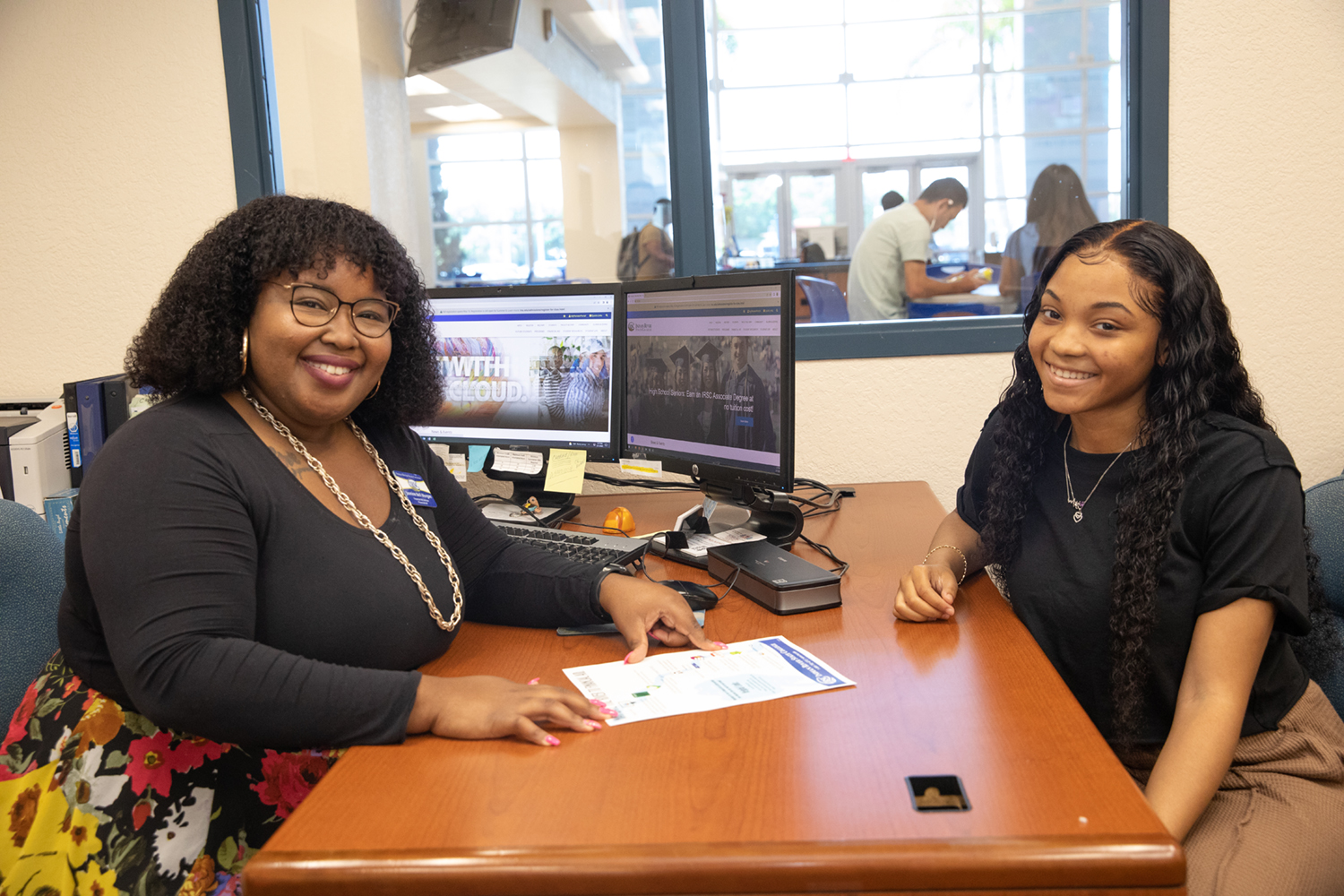LOANS
Learn all about loans, a form of financial aid you need to pay back.

College loans are available from the federal government and private organizations. As with any loan, a college loan must be paid back.
Federal student loans don’t need to be repaid until you’re out of college. However, interest may accrue on your loan amount while you are a student.
If you wish to apply for any of these federal loans, start by completing the Free Application for Federal Student Aid, or FAFSA. Then complete the online loan request in Student Workday, which you can find in The River Portal.
When your loan has been certified, you’ll receive a notification with your next steps. These will include:
- Completing a master promissory note, or MPN. The MPN is a legal document in which you promise to repay your loan(s) and any accrued interest and fees to the U.S. Department of Education.
- Receiving loan entrance counseling. Entrance counseling will explain your rights and the obligations you agree to meet when you accept a Direct Loan.
Federal Direct Student Loan
Federal Direct Student Loans are funded by the U.S. Department of Education and do not require a credit check. You can apply for these loans if you’re enrolled in:
- A two-year degree-seeking program
- A four-year degree-seeking program
- An eligible certificate program
There are two basic types of Federal Direct loans. Students can apply for:
- Subsidized loans
- Unsubsidized loans
These loans have the same fixed interest rate, determined each year on July 1. You won’t have to make payments on these loans while you are enrolled in school.
Parents may assist students by applying for:
- Direct PLUS loans
You must meet the financial aid eligibility requirements to be considered for Federal Direct Student Loans. Your class standing (freshman, sophomore, etc.) and your dependency status determine how much you can borrow. (See Annual Loan Limits on this page for the exact numbers.)
If you receive a Federal Direct loan, you will be required to receive student loan exit counseling before you graduate or whenever you are no longer enrolled at least half-time. At that time, you will receive an action item in your Workday account with a link to complete loan exit counseling. Like the entrance counseling, this session will help you understand your rights and obligations as a student borrower.
Subsidized Loans
Subsidized loans are need-based Federal Direct loans where the government pays your interest while you are in school. Once repayment starts, you will be responsible for paying interest on the loan as well as the principal amount you borrowed.
Your need is based on information collected from the Free Application for Federal Student Aid (FAFSA). If you are a new loan borrower, you can borrow up to 150% of your program cost with a subsidized loan.
For example: if you are in a two-year program, you can borrow this loan for up to three years, even if you switch to a different program. The new program must be of the same length or shorter.
Unsubsidized Loans
Unsubsidized loans are non-need-based Federal Direct loans. With an unsubsidized loan, the government does not pay the interest on your behalf while you are in school. Instead, interest will accrue while you are in school. You pay that interest once you leave school and your repayment starts.
The amount of your unsubsidized loan—combined with any other aid you are receiving—cannot exceed your total estimated cost of attendance.
PLUS Loans
Parental Loans (PLUS) can only be taken out by parents on behalf of eligible undergraduate dependent students. The student must:
- Meet the standards of Satisfactory Academic Progress
- Be degree-seeking
- Be enrolled in classes that count toward degree completion for at least six credit hours per term
PLUS loans:
- Require a credit check
- Have a fixed interest rate of 7.9%
- May not exceed the student’s cost of attendance minus any other aid the student is receiving
Repayment for PLUS loans begins on the date the money is disbursed. Parents decide if the loan funds, after fees are paid, are paid to the student or themselves. Parents may apply for PLUS loans online on the Federal Student Aid website.
Annual Loan Limits
The chart below indicates the combined (fall and spring semesters) maximum loan amounts you may borrow each academic year.
Your class standing is determined by the number of credits you have earned (not the length of time you have been in school).
Dependent Students
Note: If you are a dependent student who is not eligible for a subsidized loan, you can receive an unsubsidized loan.
| Class Standing | Maximum Subsidized | Maximum Unsubsidized | Combined Subsidized/ Unsubsidized |
|---|---|---|---|
| Freshman (01–29 credits) | $3,500 | $0 | $3,500 |
| Sophomore (30–59 credits) | $4,500 | $0 | $4,500 |
| Junior (60–89 credits)/ Senior 90-120 credits | $5,500 | $0 | $5,500 |
Independent Students
| Class Standing | Maximum Subsidized | Maximum Unsubsidized | Combined Subsidized/ Unsubsidized |
|---|---|---|---|
| Freshman | $3,500 | $4,000 | $7,500 |
| Sophomore | $4,500 | $4,000 | $8,500 |
| Junior | $5,500 | $5,000 | $10,500 |
Indian River State College’s Student Loan Default Rates
Defaulting on a student loan means not making payments as specified in your master promissory note, or MPN.
The chart below shows Indian River State College’s student loan default rate over the past four years.
| Year | Number of Students in Repayment who Defaulted (Numerator) | Number of Students in Repayment (Denominator) | Cohort Default Rate |
|---|---|---|---|
| 2022 | 0 | 0 | 0.0% |
| 2021 | 0 | 0 | 0.0% |
| 2020 | 0 | 0 | 0.0% |
| 2019 | 46 | 874 | 5.2% |
Learn the Lingo
Not familiar with terms like “master promissory note,” “interest,” or “repayment”? Find definitions on the Federal Student Aid website.

CONTACT FINANCIAL AID
We’re here to help! Join the line to meet with us—virtually or in person—using QLess. Join from anywhere and get notified when you’ve reached the front of the line. Or contact the financial aid advisor for your campus by email or phone.
Financial Aid Office
Location: Massey Campus
financialaid-info@irsc.edu
772-462-7450